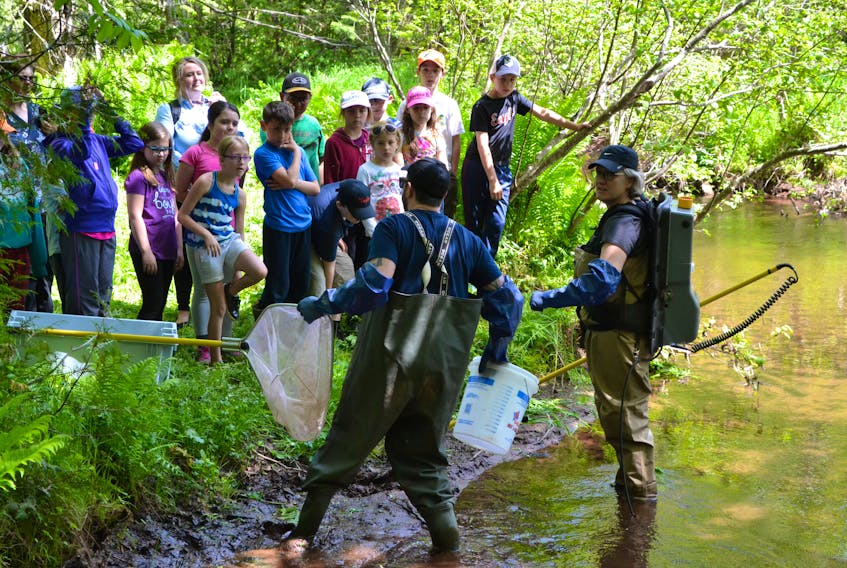GLENWOOD, P.E.I. — Fisheries technician Matt Sheidow had a first-time-find when he scooped up a rare slimy sculpin in a small stream near Glenwood last week.
Sheidow was part of an electrofishing demonstration for a class of Grade 4 students June 13.
His boss, freshwater biologist Rosie MacFarlane, advised the students before she switched on the electrofishing gear there was potential to find the tiny fish with the oversized heads.
“Trout candy,” she called them.
MacFarlane said the small stream off the Isaac Road is one of the few places slimy sculpin can be found around P.E.I.
The students from O’Leary Elementary School were gathered streamside to release salmon they had raised in the classroom. MacFarlane with her electrofisher joined other environmental organizations to share some nature knowledge with the youngsters.
Eliza Knockwood presided over a Mi’kmaq ceremony before the students released their fish.
For Sophie Gallant, seeing the fish they raised go free was the highlight of the environmental field trip.
For the electrofishing demonstration, MacFarlane and Sheidow got into the stream wearing rubber waders and long rubber gloves so that they would not be impacted by the electrical current the specialized equipment sent through the water. MacFarlane said the electrofisher unit costs about $10,000 and the battery pack another $1,500.
MacFarlane dipped the wand into the water and Sheidow followed behind with a scoop net to gather up whatever fish the device temporarily stunned.
Electrofishing, MacFarlane explained to the attentive students, helps get a count of fish in a stream.

“Don’t get our fish,” a student called out, worried about the young salmon her class had released further upstream.
Sculpins and brook trout were the only fish scooped up, and they were placed into a tub of river water for the students to examine more closely.
A swarm of mosquitoes joined the tour, but the class soldiered on.
The electrofishing, and subsequent display of the captured fish, presented Sheidow the opportunity to snap a photo of a sculpin with his cellphone.
After the fish came the birds.
Jamie Stride from Island Falconry Services brought along a hawk and some falcons for a demonstration while the students enjoyed a pond-side pizza lunch. One student said it would be nice to have his own falcon.
This is the fifth year in a row Elton Ellis, co-ordinator of the West Point and Area Watershed Group, hosted an end-of-year demonstration for students at Glenwood Pond.
He observed the students were already demonstrating good environmental practices by putting thier garbage in its rightful place.
“I think it’s very educational for them,” Ellis said. “It’s good for them to know about their environment.”









